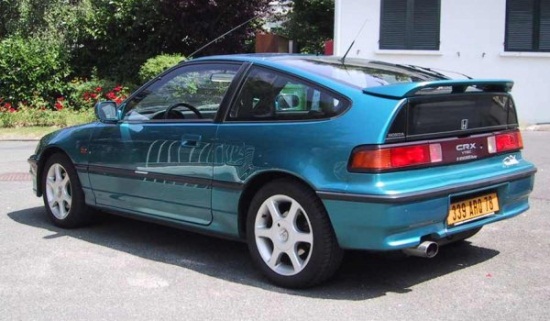Our Fuel Economy Standards and Tradeoffs
Posted on Apr 14, 2017 in Safety | 2 comments

Honda CRX: the next economy car?
As fuel economy becomes a top concern of car buyers, confusion predominates over how it’s measured and how best to achieve it. I don’t know a way through this morass (who does?), but a return to some basic principles of physics in auto design might help.
The EPA over time has developed a complex set of rules and testing procedures, some of which are difficult to reconcile—like testing with ethanol-free gasoline when 10 percent of virtually all gas contains ethanol, which reduces mileage. A recent article suggests that at least some cars get much better mileage on the street than their EPA ratings suggest.
The agency has become a political football, with the Wall Street Journal calling it “federal poison.” Mitt Romney, declaring that CO2 is not a pollutant, wants to kill all existing fuel economy standards. Now, dioxin in food has become an issue—properly so, I think—but to many, the EPA represents regulation gone wild.
To an outsider, the EPA’s Office of Transportation has become almost impenetrable. Finally, U.S. rules for measuring emissions and economy are very different from those in Europe and Japan, which makes an unlevel playing field in the global auto economy.
Well, for better or worse, the auto industry has signed on to the tougher new fuel economy standards—loopholes, faulty measurement and all. Automotive News touts that in the last four years average fuel economy in new cars and trucks has risen—hold on to your hats—“nearly 3 mpg”!
In the very last sentence of the piece we learn: “Among engine types, diesel engines improved 9.8 mpg while conventional gasoline engines improved only 2.6 mpg over the period.” Yet, because EPA measurement and certification of diesels is much tougher than in Europe, diesel has consistently lagged in the U.S. This, I submit, is crazy.

But the real reason our cars still don’t get better mileage is that we have made a tradeoff between safety and economy. As more and more safety features have been either desired or mandated, car weight has gone up dramatically. Consequently, fuel economy has suffered.
Back in 1981, the Dodge Omni (and several other small cars) was delivering 50 MPG. And 40-something was common. That’s gas-powered cars, too. Diesels—like the ’80 VW Rabbit—posted highway mileage pushing 60 MPG.…
Mind, these cars were returning mileage better than—or at least as good as—“state-of-the-art” 2012 model hybrids, even though they were primitive in terms of their technology. Most had carburetors; none had overdrive transmissions.
Most all the 1980s cars weighed in around 2,000 pounds, and cars like Honda’s CRX weighed a lot less, in 1984 achieving (per EPA estimates) 51 mpg city/67 highway. By 1991, the CRX’s highway mileage had declined to 52 mpg, which is still incredible.
As more and more safety stuff has been added, compact car weights have risen an average of 500 pounds. Yes, we are safer, but we are paying for it at the pump.





Engineering is a tough business, and requires a constant trade off between different requirements. I agree that safety engineering makes cars heavier in some ways, but you also have to look at customer demands like air conditioning, less noise, more power and automatic transmissions, and extra electronic gear and conveniences like power windows, all of which can add quite a few hundred pounds of weight. One saving grace is crumple engineering, which allows unibody construction that is lighter but absorbs energy better. I think it’s very possible to engineer a car that’s much lighter than present vehicles while still retaining a safe structure and features like air bags. Eliminating extra equipment like A/C, power conveniences and superfluous electronics would eliminate more weight. Many of those high mileage cars you mention didn’t have all this junk on them and that’s one of the reasons they got such high mileage. I’d sure be interested in such a car.
ayup! the CRX hf was the bomb!